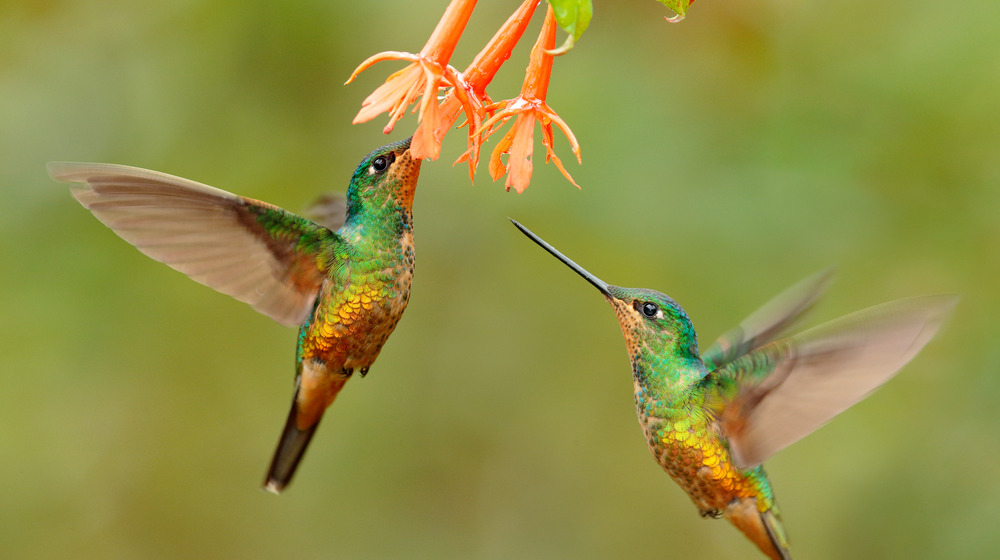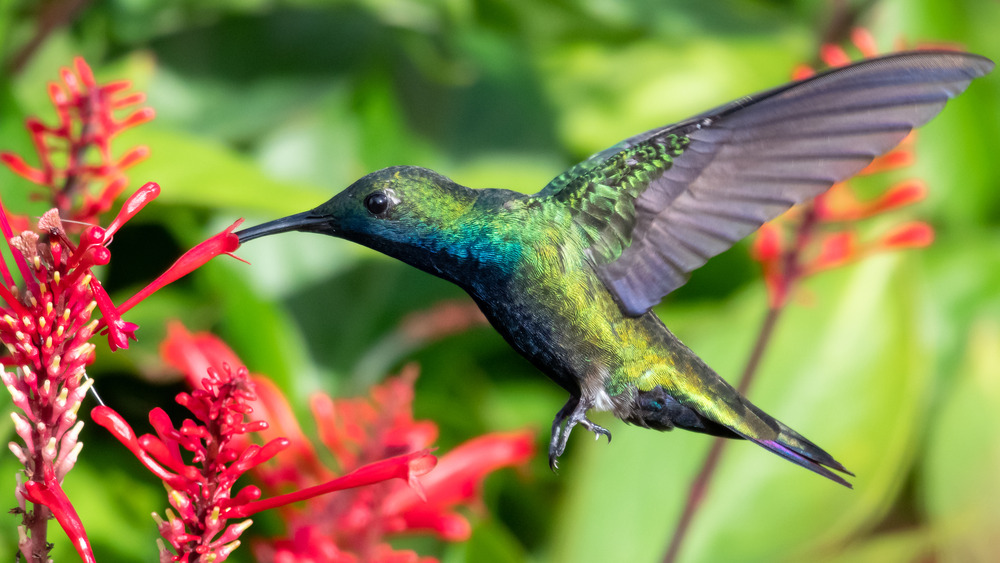What To Plant In Your Garden To Attract Hummingbirds
If you regularly plant a flower garden, you might occasionally receive some beautiful little visitors due to your healthy habit. Hummingbirds, the smallest migrating bird, have no sense of smell, so they rely on their color vision to find a food source. These tiny birds are the only ones that can fly backward, and their wings make a humming noise as they fly. In North and South America, 330 varieties of hummingbirds exist, and they're hungry, sometimes consuming double their body weight, which is as heavy as a nickel, in a day (via Kaytee).
Hummingbirds often flock to flowers, and if you enjoy these beautiful creatures fluttering about your garden, you can take some steps to help attract them to your yard by choosing specific types of flowers, plants, and trees (via the Old Farmer's Almanac). Particularly fond of the color red, you can do several things to create an optimal environment for these minuscule acrobats (via the National Audubon Society). There are several gardening hacks you can employ to make your area more hummingbird-friendly.
Here are a few gardening hacks hummingbirds love
If you hope to attract hummingbirds to your garden, several red items could help you in your quest. However, ensure that you plant naturally occurring red plants because dye could harm the birds (via Kaytee). Barring dyes, though, things like red garden decorations or even wearing red clothes while gardening could help catch these little birds' eyes (via the Old Farmer's Almanac). If you create a habitat that provides shade, food, shelter, and water for hummingbirds, along with the types of flowers they need, they will come.
The Old Farmer's Almanac recommends creating a habitat up to ten feet high using herbs, flowering shrubs, dwarf trees, and vines. Choose brightly colored flowers with plenty of nectar for these high-octane avians. A wide variety of plants attract hummingbirds, including annuals, perennials, and biennials. Choose beebalms of several types, columbines, daylilies, lupines, foxgloves, hollyhocks, and cleomes, impatiens, and petunias to create a colorful habitat. The National Audubon Society also suggested you provide plenty of areas for hummingbirds to perch in your garden and plenty of fresh water.
With some careful planning, you can create a lush area that brings hummingbirds for you to enjoy. Who knows? You may even find yourself dreaming of birds because you see so many each day.

